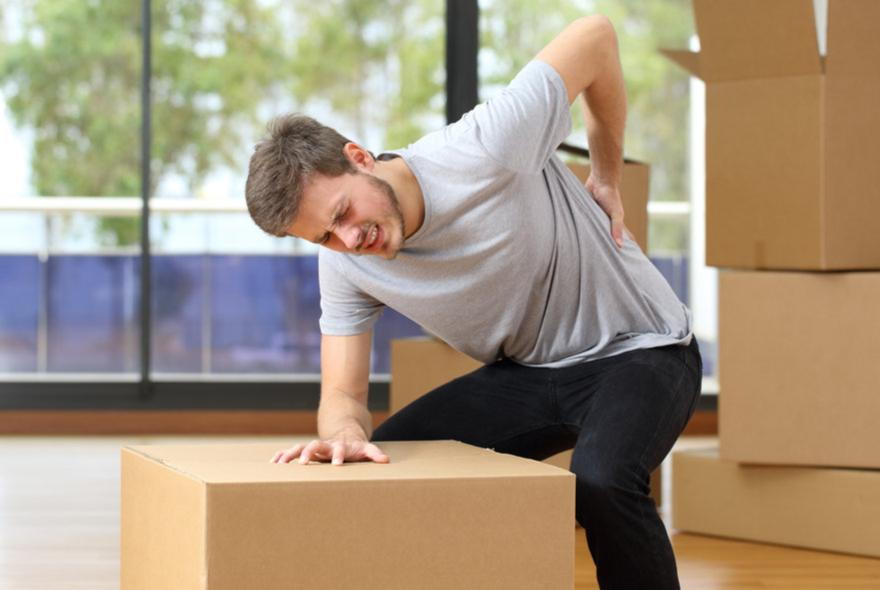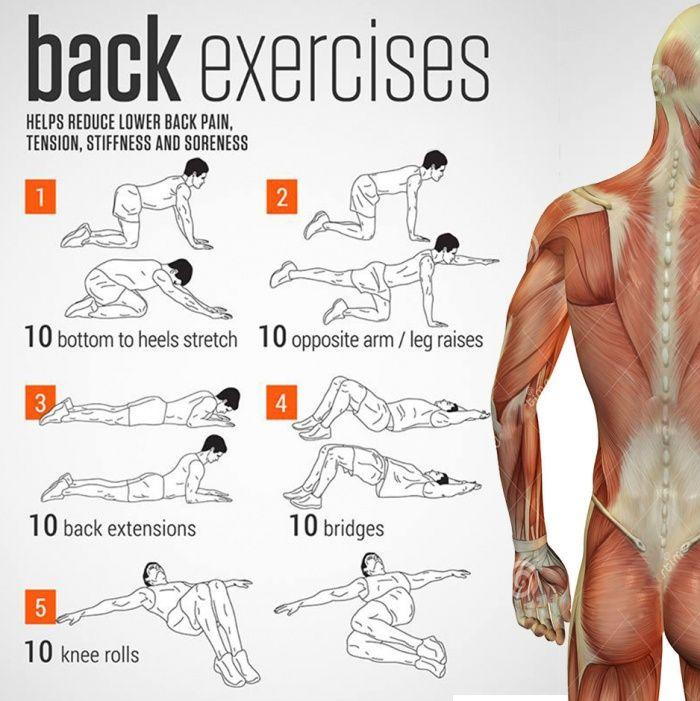Back pain Miami

- posted: Apr. 05, 2019
What can you do for Chronic Back Pain in Miami?
The first thing you can do for back pain in Miami is to come in and visit Cafe of Life Chiropractic for a full spinal examination. We have a video x-ray machine to view all the details of your back, neck, shoulder, hips, and legs. We can give you a professional chiropractic diagnosis and treatment within the same hour. You might be asking yourself, is it necessary to get checked out? Here are some reasons why you should not let your back pain linger below.
Maybe you've been resting, hoping the back pain just needs time to heal. But most doctors now encourage lower back pain sufferers to get active and move their backs and related muscles as a better pain relief treatment, you can help relieve back pain, but only the right kind; avoid workouts that put too much stress and strain on the back. So which exercises should you choose? That partly depends on how intense your pain is, and what causes it. So, you should always get the recommendation of your doctor before doing any heavy exertion for lower back pain.
The following slides present several simple exercises that can help relieve lower back pain, and also highlight a few activities to avoid. With your doctor's approval, adding these movements to your workout routine can free you from your nagging, daily pain, leading to better overall health.
Fitness is often a great treatment for back pain, but some movements offer you little health benefit. Toe touches from a standing position can aggravate sciatica and other conditions by overstressing ligaments and spinal disks. Another cause for concern is the way standing toe touches can overstretch hamstrings and muscles in your lower back.
How Much Pain Is Too Much?
Some mild discomfort and pain can be expected anytime you start a new workout. As you work your way back to better health and your muscles strengthen, that pain and discomfort should disappear. But when a fitness routine causes moderate or severe pain symptoms that last longer than 15 minutes, you should end the exercise and check in with your doctor.
One of the classic core-strengthening workouts is the partial stomach crunch. Partial crunches build strength in both your lower back and related stomach muscles, making this an ideal exercise for people with spondylosis.
Here's how to get the most out of partial crunches:
- Lie flat on your back, and keep your feet flat on the floor with your knees bent.
- With your hands behind your head or with arms crossed around your chest, raise your shoulders from the floor. Make sure to keep your stomach muscles tight.
- Breath out while raising your shoulders. Avoid leading with your elbows (or yanking your neck off the floor with your arms).
- Hold for one second. Next, lower yourself back down to the floor in a controlled manner.
- Repeat with between eight and 12 repetitions. Remember to follow proper form, which prevents excessive spine stress. Keep your feet, tailbone, and lower back against the floor throughout the exercise.
Sit-ups are a fitness standard, but they're not as good at strengthening your core as you may think.
Although most people see sit-ups as a stomach-strengthening activity, in reality, people often use their hip muscles more than their stomachs when doing this exercise.
Not only are they a poor choice for core strength, but sit-ups create pressure on spinal disks, which can lead to injury by increasing your lower back pain rather than lowering it. To maintain good health and improve low back pain, try more suitable workouts like the ones outlined further on.
Hamstring stretches relieve the back of the leg, where some of the muscles that support the work of the lower spine are found. As shown in the photo, this is a stretch that benefits from the use of a towel or fitness band.
To perform a hamstring stretch, follow these steps:
- First, lie on your back with one knee bent.
- Next, thread a towel beneath the ball of the foot on the unbent leg.
- Pull back on the towel slowly, straightening your knee. You ought to feel a gentle stretch along the back of your leg.
- Hold the stretch for at least 15-30 seconds.
- For each leg, repeat 5 times.
It's a bird! It's a dog! No, it's a fitness routine to ease low back pain! The bird dog is a great way to learn to stabilize the low back during movements of the arms and legs. Here's how it is done:
- To begin, get on your hands and knees.
- Tighten your abdominal muscles.
- With one leg, lift and extend it behind you while keeping your hips level.
- Hold that position for a full five seconds.
- Now switch to the other leg.
- For each leg, repeat eight to 12 times. For an added challenge, try lengthening the time you hold each lift.
- For each repetition, try lifting and extending your opposite arm in front of you.
- Don't allow your lower back muscles to sag.
- Stay in position—don't lift your arms or legs any higher than the low back position can maintain.
Here's another way to get your legs pumping as a treatment for low back pain symptoms. Follow these directions to perform a safe knee-to-chest workout.
- Lie on your back. Put your feet flat on the floor and bend your knees.
- Draw your right knee up to your chest. Keep the left foot flat against the floor.
- Hold for 15-30 seconds. Meanwhile, be sure to keep your lower back flat on the floor.
- Next, lower your right knee. Repeat the routine with the left leg.
- For each leg, perform knee-to-chest two to four times.
Before back pain has you writhing on the floor with the usual symptoms, try lying on your back for some pelvic tilts. This workout is designed to strengthen your pelvis, which often works in concert with the core muscles along your spine. Making sure your abdomen can pull its fair share means your spine pain will have one less possible cause.
- Lie with your back and upper body on the floor with your knees bent. Keep your feet flat on the floor.
- Pull in your stomach. Imagining your belly button is being pulled toward your backbone—this helps keep your stomach tight. Doing this, you will notice your hips rocking back as your back and spine press into the floor.
- Hold this movement for 10 seconds, allowing your breath to smoothly enter and exit your chest.
- Repeat your pelvic tilts eight to 12 times.
Bridging offers so much for the symptoms of back pain. This exercise helps strengthen various supporting players for your back like the hamstrings, glutes, transverse abdominis, abdomen and hips. It also works directly to strengthen the lower back. Follow these steps to assure a safe and rewarding bridge workout:
- Lie with your back to the floor, knees bent with only your heels touching the floor.
- Dig your heels into the floor. Squeeze down on your glutes. Lift your hips up until your shoulders, hips, and knees make a single, straight line.
- Hold this position for about six seconds.
- Slowly bring your hips back to the floor and give yourself about 10 seconds of rest.
- Repeat bridges eight to 12 times.
There are a couple of things to remember when bridging. First, try not to arch your lower back while your hips are moving upward. Next, avoid overarching. You can do that by keeping your abdomen tight both before and throughout the lift.
If properly done, weight lifting will not exacerbate your back pain. In fact, you may feel that pain start to melt away as weight lifting begins to strengthen your lower back and supporting body parts.
However, when your back pain comes on suddenly (what doctors call acute pain), the additional stress of weight training could put you in harm's way, potentially leading to injury. To use weight lifting as a back-pain treatment, start by talking to your doctor. Your doctor can advise you on whether or not to lift weights. If they are recommended, your physician can advise you on which workouts to stay away from.
Aerobic workouts—sometimes called cardio—help strengthen the whole cardiovascular system, from the lungs and heart down to the blood vessels themselves. Aerobics can include biking, swimming, walking, or many other exercises that elevate your heart rate and get you moving. To start, try a short session. Then over time, lengthen the session as your stamina improves.
Since back pain sometimes requires special care, try swimming as a treatment for your symptoms. In swimming, the water supports your body weight, giving your back a break. Be careful to avoid any strokes that require your body to twist.
A routine that incorporates strengthening and stretching with a focus on the abdominal core sounds ideal for those who suffer from back pain symptoms. Pilates is a training workout that sometimes uses an apparatus called a Reformer to emphasize flexibility and endurance along with strength. But many Pilates exercises can be performed without any special equipment.
With help from an experienced instructor, Pilates may help some people with low back pain. Make sure your instructor knows about your pain ahead of time, as you may need to skip some moves.
Nearly everyone will experience some form of back pain in his or her lifetime. The low back is the area behind the belly from the rib cage to the pelvis and is also called the lumbar region. Back pain is a major cause of missed work. Low back pain usually resolves on its own and is commonly the result of a strain injury. There are many treatments for low back pain.
Location
Find us on the map
Cafe of Life Chiropractic
2555 Collins Ave Suite C4
Miami Beach, FL 33140, USA
Office Hours
Our Regular Schedule
New Patients only 10 am to 12 pm
2:00 pm - 6:00 pm
Closed
10:00 am - 1:30 pm
3:30 pm - 6:00 pm
Closed
10:00 am - 1:30 pm
Closed
Closed